What is Chaturmas (चतुर्मास)? Importance of Ekadashi (एकादशी)

What is Chaturmas?
If you are from a Hindu Indian family, you must have heard the term ‘Chaturmas’ and the ‘Ekadashi’ in this period. Today, we explore what Chaturmas is and why the Ekadashi in this period is so revered.
Chaturmas (चतुर्मास) literally translates to ‘four months’ is a period that falls in the rainy season and is considered especially holy. The beginning of this four-month-long period is marked by Devshayani Ekadashi, which is the eleventh lunar day of the bright half (Shukla Paksha) of the month of Aashadh (which falls in June-July of the Gregorian months). Thanks to the diverse cultures around the country, Devshayani is called different names in different languages, Toli in Telugu, Aashadi Ekadashi in Marathi, Maha Ekadashi, Devpoli, Padma Ekadashi, Hari Shayani Ekadashi, and more. The Chaturmas ends with Prabhodhini Ekadashi, which is the eleventh lunar day of the bright fortnight of the lunar month of Kartik (October-November)
Holding massive significance in the Hindu and Jain culture, Chaturmas is revered as the holy four months of rainy days where we hear people say colloquially “Bhagawan soye hai” (The almighty is asleep), referring to the Yoganidra Avatar associated with Chaturmas.
The process of ‘Nava-Shrishti-Nirmiti’ (creation of a new world) by the creator Brahma, results in the Maintainer Narayana to stop his activities and rest and go in the meditative Vishnushayana (sleep of Vishnu).
A shloka from the scriptures for Chaturmas:
वार्षिकांश्चतुरो मासान् वाहयेत् केनचिन्नरः।
व्रतेन न चेदाप्नोति
किल्बिषं वत्सरोद्भवम्॥
Transliteration:
vārṣikāṃścaturo māsān vāhayet
kenacinnaraḥ।
vratena na cedāpnoti kilbiṣaṃ vatsarodbhavam॥
Hindi
Translation:
मनुष्य को चतुर्मास में किसी भी प्रकार के व्रत करने चाहिये, अन्यथा
मौसमी व्याधि होती है।
English
Translation:
The yearly caturmāsa should be spent with some type of fasting, otherwise one
gets the seasonal diseases.
The Jain festival of Paryushan also falls in Chaturmas and is observed for 8 days by devotees from the Shwetambara Parampara and 10 days for the Digambara Parampara.
What is Ekadashi (एकादशी)?
For the uninitiated, let us understand what exactly is Ekadashi briefly, it’s going to come up a lot in the article down below, so we better get it correct.
Ekadashi (Pronunciation- Ēkādaśī) is the eleventh lunar day of the lunar fortnight, called Paksha (literally meaning ‘side’, but here used in the context of ‘half’). The two Pakshas, namely Shukla Paksha (the bright or the waxing phase of the moon) and the Krishna Paksha (the dark or the waning phase of the moon), together make up one lunar month. (Not to be confused with Gregorian Solar month)
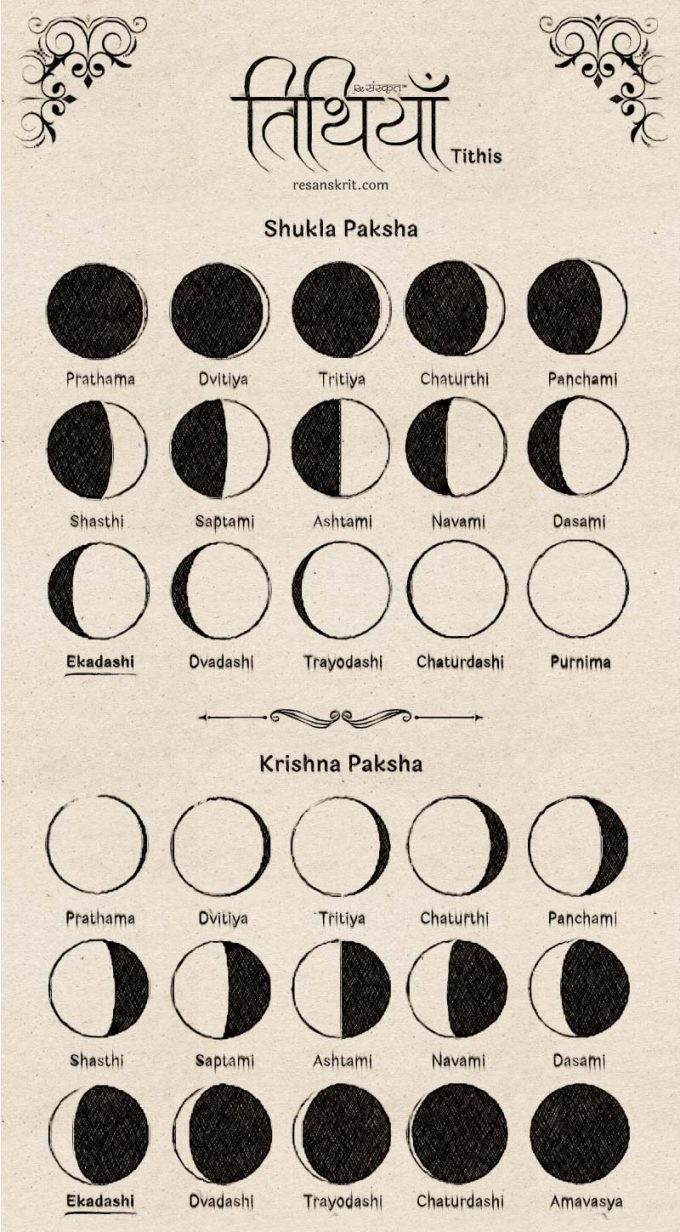
Why Fast Specifically On Ekadashi?
Moon has an effect on us!
We’re all familiar that the moon is never constant like
the other luminary, Sun. The moon has its phases, Amavasya (no moon night)
and Purnima (full moon night) are the two markers of the fortnight and comprise
together of a month.
As we know, the moon’s gravity affects the tidal waves on earth and since we’re all made up of 60%-70% water, the moon does have an effect on us, our mind, our digestion.
While the moon is going through its phase, on the 11th day the energy shifts and the moon begins to harbor the energy of the fortnight point it’s going towards (Amavasya or Purnima).
Astrologically, since there are 360 degrees in a circle, the Moon moves (on the average) 360 / 27.3 or 13.2 degrees per day relative to the stars. So on the 11th day, the Sun, Moon, and the Earth and in trine (120°) position to each other and hence have a greater impact on the gravitational forces and the magnetic pull of the moon makes it a day chosen by the ancient Yogis to practice austerity, observe fasts and focus on spiritual growth.
It is stated in the Garuda Purana that Bhagawan Krishna names Ekadashi as one of the “five boats for the people who are drowning in the ocean of worldly existence“. The other four are Lord Vishnu, the Bhagavad-Gita, the Tulsi or holy basil, and the cow.
Garuḍapurāṇam Pretakāṇḍaḥ (Dharmakāṇḍaḥ), Adhyāyaḥ 32
पञ्चप्रवहणान्येव भवाब्धौ मज्जतां
नृणाम्।
विष्णुरेकादशी गीता तुलसी विप्रधेनवः॥ २,३२.१००॥
Transliteration:
pañcapravahaṇānyeva
bhavābdhau majjatāṃ nṛṇām।
viṣṇurekādaśī gītā tulasī vipradhenavaḥ॥ 2,32.100॥
Hindi
Translation:
भवसागर में डूबते मनुष्यों के लिये सागर पार करने के ये पाँच ही
माध्यम हैं –
विष्णु, एकादशी, गीता, तुलसी, और (ब्राह्मण की) गायें।
English
Translation:
There are only 5 things that can help people drowning in the ocean
of existence to cross it:
Vishnu, Ekadashi, Bhagavadgita, Tulasi, and (Brahmins’) cows.
Fasting on Ekadashis is considered to be highly beneficial across various sects of Hinduism. And Devshayani Ekadashi is revered all the more because it marks the commencement of Chaturmas. Various scriptural mentions and references explaining the benefits have made it a cultural practice from eons to observe a Vrata (fast) on this sacred day.
The fasts include abstinence from
- Grains
- Onions
- Garlic
- Non-vegetarian food
- Others – Haldi, brinjal, citrus fruits, ash gourd, radish, beans, tamarind, gooseberries
Onion and garlic are avoided on all fasts, and contrary to popular belief the reason is not that they’re hazardous to us. Onion and garlic both are known to have a heating effect on the body, what we colloquially say here in India as ‘Garam Padhte Hai‘. And so they’re known to create Rajasic (why they’re called ‘Rajoguni‘) venereal energies in the body (totally opposite of what one would aim for on a ‘spiritual’ day of fast when they’re supposed to go within and channelize their energies inward).
India being a tropical country one wouldn’t want to warm the body up more, especially when our intention is not to do any physical activity, rather it is mental (meditation and going inwards). This is the same reason why in the ancient varna (caste) system onions and garlic were foods not consumed by Brahmins, but Kshatriyas and other varnas could eat them.
Scientifically too, it is advised on the basis of ancient Indian Science of Ayurveda to consume light foods, which are easily digestible during the monsoons, as the metabolism is sluggish during this period.
The one food which is especially associated with Ekadashi is Rice. On all Ekadashis there is a practice of not eating rice strictly, whether one is fasting or not, rice is always avoided on this day.
The scriptures and the whole cultural set-up encourages people to observe fast with various kinds of options, both in Hindu and Jain traditions.
- Ekbhojan – eating only one meal per day
- Solbathu – no food for 16 consecutive days
- Ayachit – eating only that which is provided
- Chauvihar – no food or water after sunset
- Navai – giving up of food for 9 consecutive days
- Maaskhaman – giving up food and water both, or just food for a period of one whole month
- Rasa Parityag – one chooses their favorite foods and takes a vow to maintain abstinence
Very interesting, no? Would you like us to cover this in a separate topic? Let us know in the comments below!
The Science Behind Fasting
The TLDR version – It is scientifically proven that fasting is not just good but required for a long healthy life. You can read the longer version below,
The longer explanation-
DNA, or deoxyribonucleic acid, is the hereditary material in humans and almost all other organisms. In the nucleus of each cell, the DNA molecule is packaged into thread-like structures called chromosomes. Each chromosome is made up of DNA tightly coiled many times around proteins called histones that support its structure. And the end of each chromosome is Telomere. Telomeres are distinctive structures found at the ends of our chromosomes. They consist of the same short DNA sequence repeated over and over again. The telomere sequence in us humans is TTAGGG. The telomere while organizing each of our 46 chromosomes in the nucleus also acts as a protective cap at the end of each chromosome so that they don’t go haywire. One can imagine it like a cover that’s holding the fragments together.
Every time a cell carries out DNA replication the chromosomes are shortened by about 25-200 bases. However, because the ends are protected by telomeres, the only part of the chromosome that is lost is the telomere, and the DNA is left undamaged. Without telomeres, important DNA would be lost every time a cell divides (usually about 50 to 70 times).
Oxidative stress causes more Telomere to shorten each time and hence it’s directly linked to calorie intake. Proper telomere functioning requires a minimum length that is maintained by telomerase. However, telomerase activity levels in adult tissues are not sufficient to prevent progressive telomere shortening with age. Therefore, telomere length is considered a cellular marker of aging. You can read more about this here.

While we’re not aiming for immortality, the fasting-feeding cycle does have a similar pattern of the cultural fasting, which a lot of times begins post-sunset the previous day and 24 hours of the day of fasting and the remaining hours before the sunrise of the next day. 36 hours of huge chunks of fasting can amplify healing and stem cell rejuvenation and the body can get time and energy both to detoxify itself leading to a healthier and long life.
Even when the observer of a fast is not in complete abstinence of food, most eat only one meal which can make it a 24 hour fast which is also a good boost.
Devotees belonging to the Vaishnava sect follow the rituals and practices with Devshayani Ekadashi with great austerity.
The Sanatana Dharma is known to use natural occurrences and phenomena, atmospheric changes and use its qualities to create a cultural festival and set of rituals to better ourselves.
This isn’t limited to any religion though, the rains fall down on anyone whether you belong to a certain religion or not. We should all take this time out to quieten our chaotic over-active minds and go within to find strength, passion, healing, and compassion.
The idea isn’t to stop yourself from anything “auspicious” as widely misunderstood, the idea is to take a look inside your own existence and come out knowing yourself better and as a by-product know the world better and be prepared to take the journey of life head-on.
Significance of Devshayani Ekadashi (देवशयनी एकादशी)
Devshayani Ekadashi holds its importance as it’s widely believed that Lord Vishnu is said to go in a state of cosmic sleep, on this very day. While it’s more casually referred to as ‘sleep’, the more appropriate explanation would be that it’s a state of complete relaxation,
The state when we’re right about to fall asleep but still conscious and wakeful, lack of mental activity but awareness of its existence, a sort of a cosmic hibernation.
That is the state Lord Vishnu is in, in the Kshirsagar (cosmic ocean of milk) lying down on the Sheshnaga (thousand-headed snake). And he will ‘wake up’ four months later, on Prabhodhini Ekadashi or Devuthani Ekadashi, which will fall in the Gregorian months of October-November.
Out of the Trinity – Brahma, Vishnu, and Mahesh, Shri Hari is considered to be the maintainer of this cosmos, letting the world run its material activities with harmony, so all Mangalik Karya (auspicious activities), marriages, starting out of new businesses, the commencement of anything auspicious is said to be prohibited for these four months.
The devatas (demigods) are asleep too and hence can’t be called for the Yagnya and the sun has begun its southward journey (Dakshinayana).
The whole idea is to go within, continue what you have to survive but pursue the meditative state as the one you worship is in, and digging deep in your own self perform the shadow work and weed out the grass of trauma that’s disrupting your field of unadulterated happiness and peace. Grow and be more centered with your own self and the rest can be achieved with a fraction of the energy that you would’ve initially put.
Story of Devshayani Ekadashi (देवशयनी एकादशी)
This story is said to be told by Lord Brahma to his son Narada and by Shri Hari Krishna to Yudhisthira to explain and stress the importance of this Ekadashi and how one must observe it.
King Mandata was the son of King Yuvanashva, and the king of the Ikshvaku dynasty (Suryavanshi). Having been a dexterous and dutiful King, his kingdom was flourishing and rising and so was the faith of his people in him. And it is due to this nature of generosity, benevolence, the religiosity that the inhabitants of his kingdom did not face any disturbances, diseases, lack of prosperity, or untimely death. But as we say nothing is constant, times did change and the kingdom had to face massive drought for 3 years and as a result of this suffer from famine too.
Due to the lack of resources no Vedic sacrificial fires (Yagnya, more here) could be performed, the ancestors (Pitra) and Devas could not be respected and oblations of Ghee (clarified butter) offerings could not be performed.
Pained by the plight of his people, and knowing that their responsibility lies on his shoulders the King meditated on the problem for a long time. But found no sin that he committed for which he is being punished and neither the solution. Dejected but still not losing the hope he took his army and rode into the forests with the aim of finding the solution. Wandering around, looking into Ashrams of each of the Munis (sages) there, got him no answer and hence no peace. The last ashram left, however, landed him at the feet of Angira Muni (sage Angiras).
The Shastras or scriptures describe him as the one whose radiance and splendor lit up all the directions and who looks alike Brahma seated in his hermitage.
With the details aside, Angira Muni guided King Mandhata to observe the Vrata (fast) of Padma Ekadashi and so should his kingdom. Describing the benefits of the fast he said it removes all kinds of ill influences and obstacles in your path.
As the said Ekadashi arrived, the king gathered all his subjects and people of all the four varnas and instructed them to observe this fast with faith and austerity.
Soon after, the rains blessed the kingdom with the liquid they have been deprived of and the kingdom flourished again.
As for Devshayani Ekadashi, the ones practicing it, wake up in the morning and bathe and wear a fresh set of clothes and take a Sankalp/Prann (oath). This Sankalp can be for that particular day or all the Ekadashis that will fall in the Chaturmas. There is also a tradition of singling out any food item of one’s liking and taking a Sankalp to give that up for the coming four months.
The Ekadashi Vrat Parana (letting go of the fast) is to be done on the next day after Suryodaya (sunrise) and before the Dwadashi Tithi (12th lunar day) ends, see the Tithi chart above.
The Sankalp Mantra for Devshayani Ekadashi
संकल्प मंत्र
सत्यस्थः सत्यसंकल्पः सत्यवित सत्यदस्तथा।
धर्मो धर्मी च
कर्मी च सर्वकर्मविवर्जितः॥
कर्मकर्ता च कर्मैव क्रिया कार्यं तथैव च।
श्रीपतिर्नृपतिः श्रीमान
सर्वस्यपतिरूर्जितः॥
satyasthaḥ satyasaṃkalpaḥ satyavita satyadastathā।
dharmo dharmī ca karmī ca sarvakarmavivarjitaḥ॥
karmakartā ca karmaiva kriyā kāryaṃ tathaiva ca।
śrīpatirnṛpatiḥ śrīmāna sarvasyapatirūrjitaḥ॥
ऊर्जावान् श्रीपति (विष्णु) जो सबके नाथ हैं, सत्य में स्थित हैं, सत्य के लिये सकल्पित हैं, सत्य के ज्ञाता हैं, और सत्य के दाता हैं।
वे धर्म, धर्मी, और कर्मी होते हुए भी कर्म से मुक्त हैं। वे कर्ता, कर्म, क्रिया, और कार्य भी हैं।
The mighty Śrīpati (Viṣṇu), the lord of all, is situated in truth, is resolved for truth, is the knower of truth, and is the giver of truth. He is dharma, abider of dharma, abider of karma, and yet devoid of any karma. He is the doer of the action, he is the receiver of the action, he is the action and the process.
Pandharpur Aashadi Ekadashi Waari Pilgrimage




A tradition of more than 700-800 years old, the Wari yatra is an annual pilgrimage procession by the Warkari Sampradaya (sect), to the sacred town of Pandharpur which is home to one of the most worshipped deity in Maharashtra – Vitthal (a form of Shri Hari). Originating from different towns and cities across the state and all meeting together in Pandharpur, this 21 days on-foot journey has Palakhis (palanquin procession) carry the Padukas (footwear) of Vithoba and few other saints.
Portraits of Sant Dnyaneshwar, Sant Eknath, Sant Tukaram, Sant Namdev, to name a few, are taken from their respective shrines and headed towards Pandharpur where all the other big-small processions coming from across the state will arrive on the auspicious occasions of Aashadi Ekadashi.
The journey is laced with devotees adorning the Tulasi-mala (a rosary made with the wood of the holy basil plant) singing the Bhaktigeet (song of devotion) and submitting themselves to the love and devotion of their Vitthoba.
This yatra holds great significance to the Warkari sect and every Maharashtrian
Conclusion
Knowing how our traditions are shaped gives us an understanding of how tactfully culture and science are woven together. Chaturmas and Ekadashis that come in it are opportunities for us to reflect, reconnect, and rejuvenate ourselves.
What are your thoughts on this? Did we miss something? What would you like us to cover next? Do let us know in the comment section below.
Written by Akansha
Sharma.
Images, moderation, and formatting by Team ReSanskrit.

![[PREORDER] 2026 Hindu Desk Calendar - Sanskrit Shlokas, Art & Tithis - ReSanskrit®](http://resanskrit.myshopify.com/cdn/shop/files/2026_desk_hero_front_533x.jpg?v=1762577869)
![[PREORDER] 2026 Hindu Desk Calendar - Sanskrit Shlokas, Art & Tithis - ReSanskrit®](http://resanskrit.myshopify.com/cdn/shop/files/2026_desk_lifestyle_2_533x.jpg?v=1762577869)
![🆕 [PREORDER] 2026 Hindu Wall Calendar - Sanskrit Quotes, Indian Art & Festivals (Vikram Samvat) - ReSanskrit®](http://resanskrit.myshopify.com/cdn/shop/files/Wall_cover_hero_2026_533x.jpg?v=1762527319)
![🆕 [PREORDER] 2026 Hindu Wall Calendar - Sanskrit Quotes, Indian Art & Festivals (Vikram Samvat) - ReSanskrit®](http://resanskrit.myshopify.com/cdn/shop/files/Wall_fullpage_month_2_2026_533x.jpg?v=1762528373)
![[New Edition] ReSanskrit® 365 Days of Sanskrit Wisdom | Daily Sanskrit Quotes | With 100+ New Quotes, Hindi & English Translations🆕](http://resanskrit.myshopify.com/cdn/shop/files/365-calendar-resanskrit-front-hero-shot_533x.jpg?v=1762351171)
![[New Edition] ReSanskrit® 365 Days of Sanskrit Wisdom | Daily Sanskrit Quotes | With 100+ New Quotes, Hindi & English Translations🆕](http://resanskrit.myshopify.com/cdn/shop/files/365-calendar-resanskrit-quote-shot1_533x.jpg?v=1762351193)





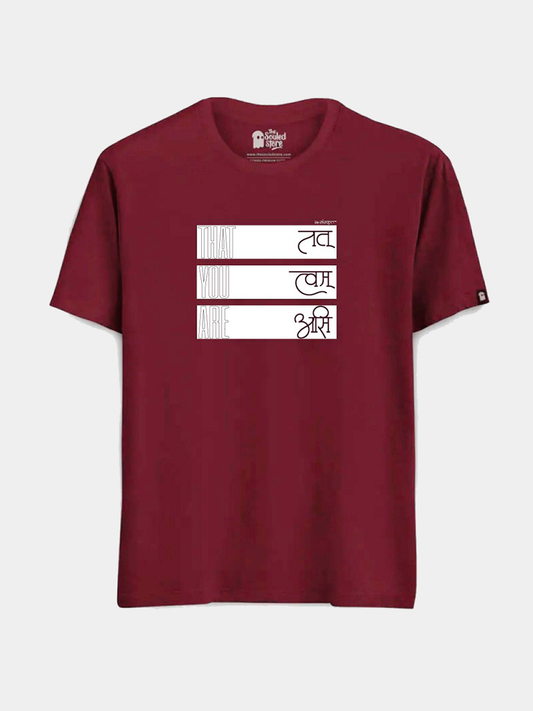
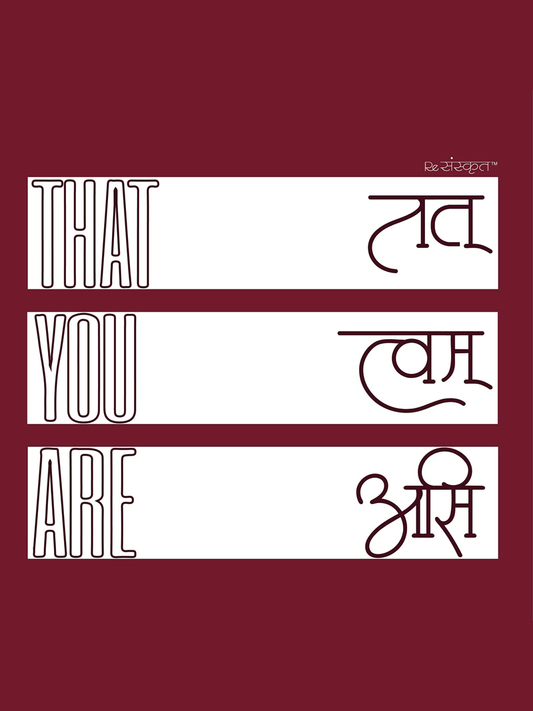
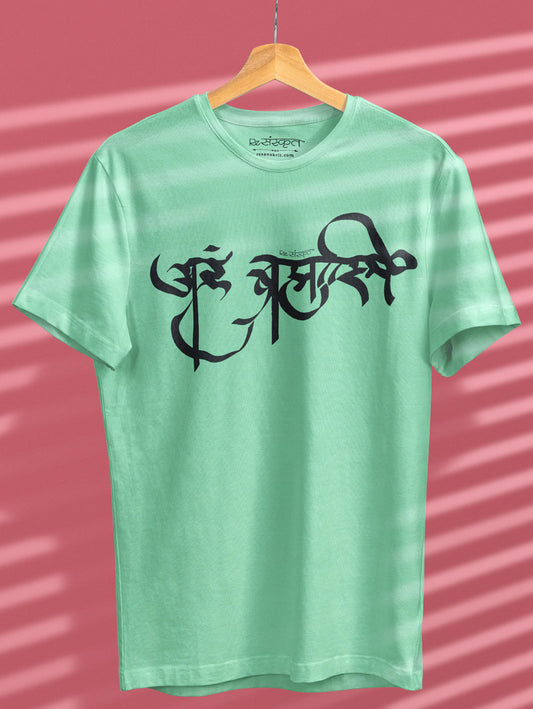
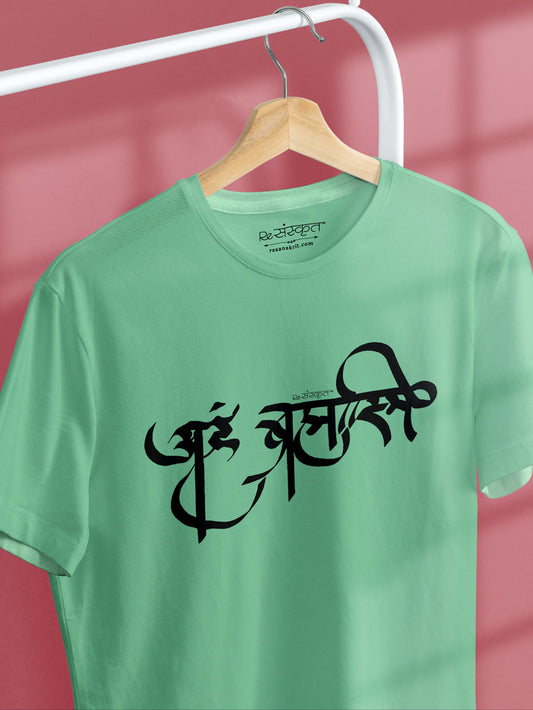
![[Part 2] Relevant Sanskrit Shlokas with Meaning in Hindi & English](http://resanskrit.myshopify.com/cdn/shop/articles/Relevant-Sanskrit-Shlokas-Article-Cover-image-part-2_8341afb2-9a7c-4b8c-90fa-eb4000af852f_165x.jpg?v=1762527855)

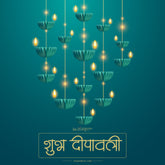
9 Comments
Thank you for this beautiful explanation
Please explain further in detail regarding the 8 options of fast as mentioned above. I would like to get the detailed knowledge on various types of fast.
Kindly elaborate further on the 8 options of fast as mentioned above
Leave a comment
Please note, comments need to be approved before they are published.